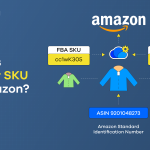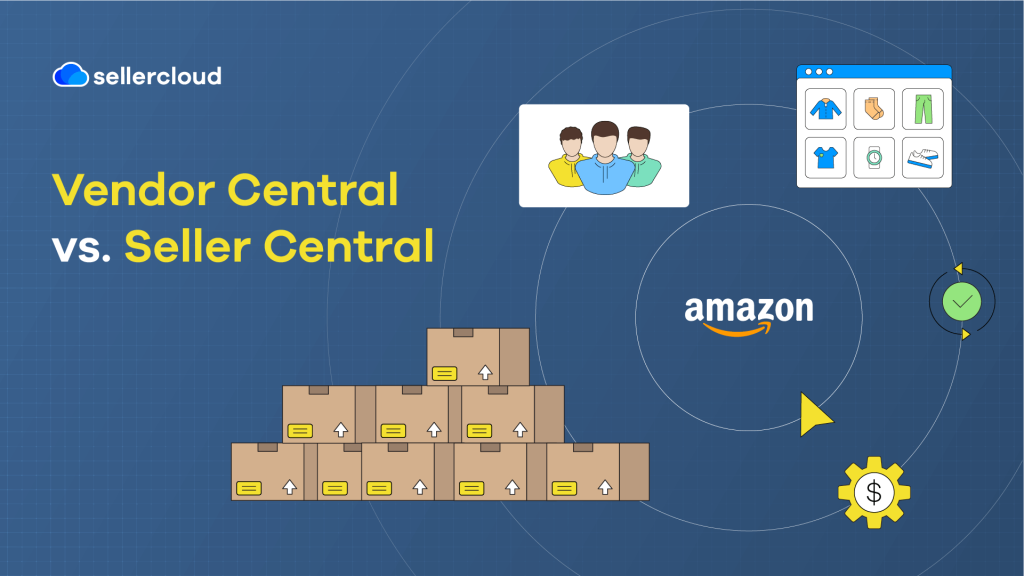
- Seller Central is Amazon’s platform for third-party sellers, and Vendor Central is Amazon’s platform for selling directly to Amazon as a first-party seller.
- Descartes Sellercloud can help you manage your ecommerce operations and improve efficiency, whether you’re a Seller Central or Vendor Central seller.
When dabbling in ecommerce selling and considering the leap into Amazon, you will likely encounter Vendor Central and Seller Central and wonder which is best for you. The short answer is that Seller Central is the only option unless Amazon invites you to Vendor Central.
Bear in mind that it’s not necessarily the case that one is better than the other—they both have pros and cons. It really comes down to your business’s ability to adhere to Amazon’s strict standards. That said, businesses invited to join Vendor Central should consider how this will affect their relationship with Amazon and business operations. It can require significant changes.
In this article, we’ll explain the difference between Vendor Central and Seller Central, their advantages and disadvantages, and who they are designed for. We’ll also answer a few extra questions along the way.
What’s the Difference between Amazon Seller Central and Amazon Vendor Central?
Seller Central is Amazon’s third-party (3P) seller program, where merchants can sell their products on Amazon’s marketplace. Meanwhile, Vendor Central is Amazon’s first-party (1P) program, where you sell products directly to Amazon, which then sells them under their name. The difference is who sells your products—you or Amazon.
Essentially, with Vendor Central, you become a vendor (or first-party seller) to Amazon that sells your products as a seller. Manufacturers and distributors often use Vendor Central, though it is not exclusive to them. Furthermore, as mentioned in the introduction, another major difference is that Vendor Central is an invite-only program. This means that you cannot sign up for Vendor Central yourself; Amazon will invite you to sign up.
If you ever get confused between the two, just remember that Seller Central is when you act as a seller, and Vendor Central is when you act as a vendor.
What Is Amazon Seller Central?
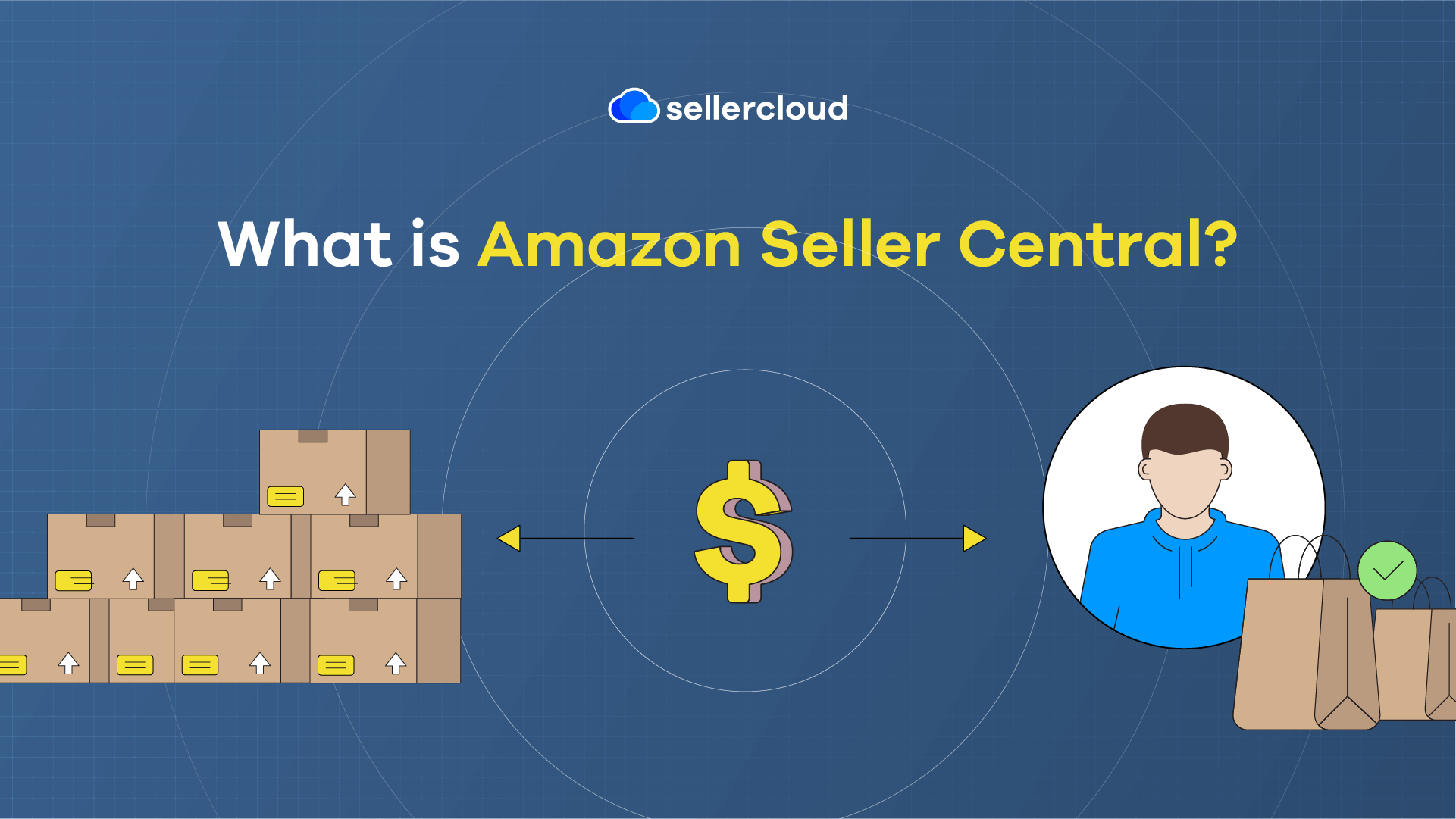
Amazon Seller Central is for third-party sellers (3P). If you want to sell your products on Amazon, you must sign up for this program. Even if you wish to join Amazon’s Handmade program, for example, you must first sign up for Seller Central. Seller Central is more prevalent among Amazon sellers than Vendor Central because Amazon is highly selective of who can sign up. However, you must have a registered company to sign up for Seller Central.
Seller Central offers professional and individual accounts. Professional account users must pay a subscription of $39.99, but if they make enough sales, this can be cheaper than paying for an individual account (+8% to 15% referral fee). However, adding fulfillment options, such as FBA (Fulfilled By Amazon) or other Amazon services, will increase your costs.
It’s important to note that you are responsible for setting up and maintaining your account with Seller Central. This is a crucial difference between Seller Central and Vendor Central.
What Is Amazon Seller Central Used For?
Amazon has allowed third-party sellers on its marketplace since 2000. Amazon is appealing to sellers because it is the most used ecommerce marketplace by online shoppers. In fact, many shoppers start their online shopping journey on Amazon. According to an article by OnlineDasher, there are approximately 9.7 million sellers on Amazon globally, 2.3 million are active, and “60% of Amazon’s sales are generated by independent sellers”—these are third-party sellers on Seller Central.
Many Seller Central users also have their own websites and other sales channels, and having an Amazon store helps create brand awareness of their products and can help funnel customers to their other channels.
What Are the Advantages of Seller Central?
Control How Products Are Sold
As a third-party seller on Seller Central, you control how your products are sold, including the pricing. (However, you may see this as an additional responsibility.)
Control How Your Brand Is Marketed
With Seller Central, you control how your brand is marketed to customers. You will not have this ability if you sign up with Vendor Central. To some, marketing your brand might sound like additional work. However, it is worth pointing out that Amazon is not responsible for keeping listings up to date—the seller must do this. Furthermore, you may feel that you’ll do a better job at reaching the audience that is most suitable for your products, as you know the best way to market your products.
Have a Closer Relationship With Your Product Buyers
When you sell directly to the people who buy your products, you can learn things about their shopping habits that you might not learn from the analytics. You also have a better chance of building brand loyalty with your customers, who’ll see your products as more than just another product offered by Amazon.
Better Control of Your Inventory
Complying with Vendor Central’s bulk orders can be a mammoth task for some sellers. You must have a thorough grip on your inventory management. It can be challenging to produce enough goods to meet Amazon’s order requirements, resulting in penalties. Because of this, some sellers would rather stick to Seller Central, where customer orders are easier to deal with.
Depending on Your Situation and Experience, Seller Central Can Be More Profitable
Theoretically, Seller Central could be more profitable for some sellers than Vendor Central if they are good at it. You may be better at selling your products than Amazon, so it would be best to maintain as much control over your products as possible.
What Are the Disadvantages of Seller Central?
More Responsibilities
You must think about marketing and advertising, pricing strategy, managing listings and orders, dealing with customers, and much more. As a third-party seller, these are solely your responsibilities, which can be time-consuming and costly.
Referral Fees, Subscriptions, and Other Costs
As mentioned above, an individual seller must pay a referral fee when a customer purchases a product from them, or a professional seller must pay a monthly subscription. These costs can destroy your profits, especially if you include other Amazon-related costs.
Check out this blog post for more on marketplace fees: What Are Marketplace Fees? Amazon, eBay, Walmart, & Etsy
What Is Amazon Vendor Central?
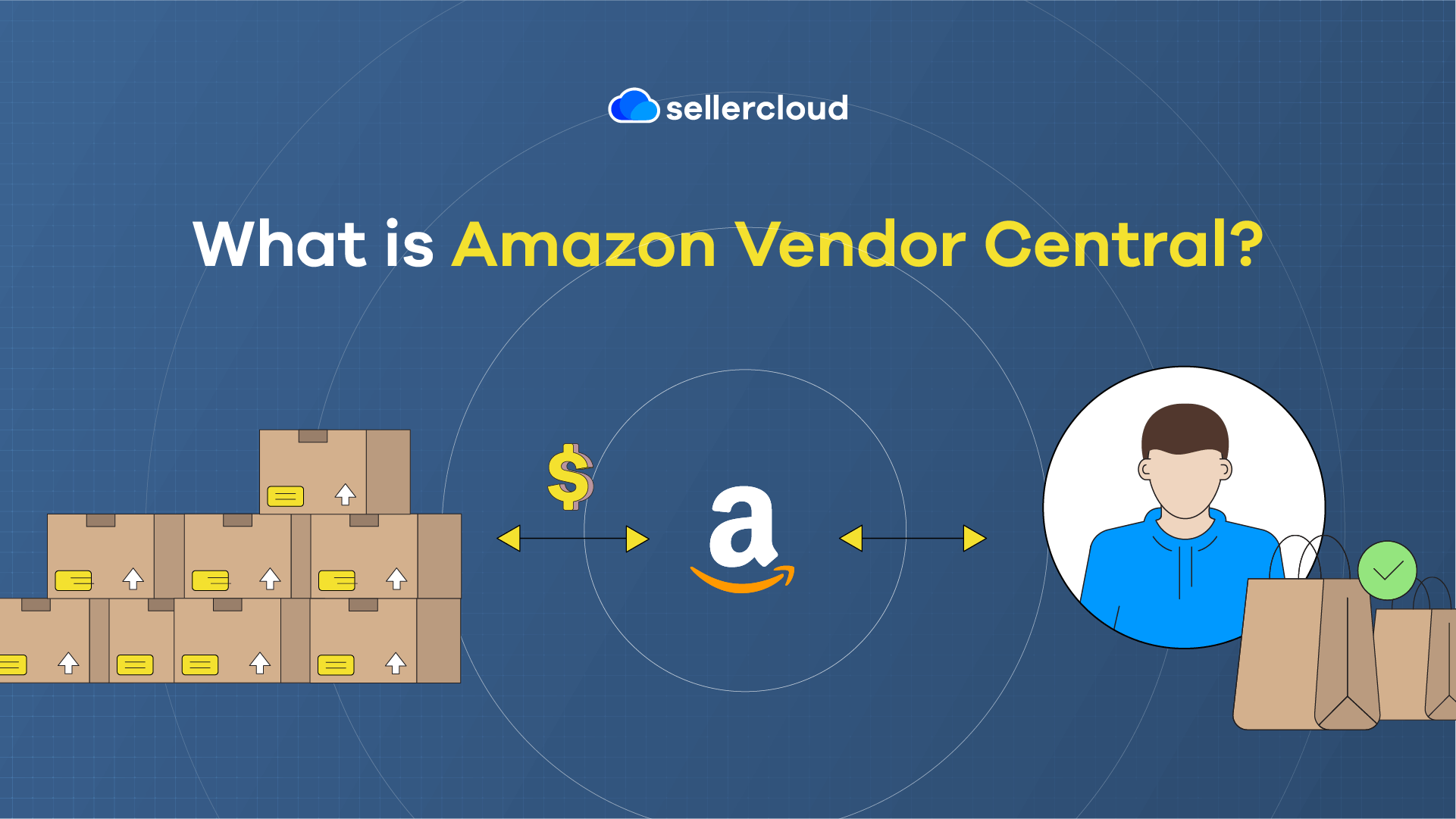
Amazon’s Vendor Central, in some sense, can be viewed as the level-up from Seller Central. You’re now selling products in bulk to Amazon as a first-party seller instead of through Amazon to individual buyers.
When customers come across listings for your products, they will not see your brand or Amazon store. Instead, the listings will say that the products are sold by Amazon, and as far as they are concerned, they are buying directly from Amazon. They will not see your brand—your products are now Amazon’s.
Many Vendor Central sellers started as Seller Central sellers. If Amazon sees that a seller is doing exceptionally well, it may approach them and invite them to Vendor Central. Amazon considers whether a seller is fit for Vendor Central primarily based on whether they are successful sellers. Furthermore, it is much easier to join Vendor Central if you are a well-known brand.
Amazon may be keener to sign a company to Vendor Central if they sell something they do not offer. They may sell something similar, or your products may belong to a new category they have not invested in yet.
Vendor Central can be more profitable for sellers than Seller Central. However, there are some costly services associated with the program. For example, you may pay for Amazon Marketing Services and campaigns on Amazon Media Group and various other costs that can cost your business tens of thousands of dollars annually.
On top of that, Amazon also requires Vendor Central sellers to pay 4% to 10% to cover marketing and slotting costs. You still need to pay to get your products shipped to Vendor Central.
Who Uses Vendor Central?
Vendor Central is mainly used by manufacturers and distributors, but also by sellers who Amazon deems worthy enough, as well as sellers who have gained a good reputation and can handle a high level of orders. In a way, Vendor Central pre-dates Seller Central. In the early days, much of Amazon’s business revolved around buying products directly from suppliers. Third-party sellers came later.
Vendor Central is best suited for big brand names that can sell to wholesale buyers on a B2B basis. For example, big brand names, like Adidas, operate on Amazon as vendors. An interesting fact—the revenue generated by Vendor Central is now comparable to Jamaica’s GDP.
What Are the Advantages of Vendor Central?
Sell Your Products in Bulk to Amazon
One of the best advantages of Vendor Central is that you can sell your products in bulk directly to Amazon. You’ll no longer need to worry about making numerous sales on Amazon’s marketplace. This simplifies business operations because they only need to make one big shipment instead of multiple smaller shipments.
This saves businesses significant money on shipping costs, labor requirements, and packaging. Furthermore, businesses are more financially secure because they won’t have to worry about making a certain number of sales per period (though this does limit their chances of exceeding this number).
Amazon Handles the Pricing
With Amazon handling time-consuming tasks such as managing pricing strategy, you will have more time to work on other essential tasks to help grow your business. However, as we will soon mention, handing over pricing control to Amazon is not always a good idea.
Amazon Lends Its Credibility to You
Customers will feel more comfortable purchasing from ‘Amazon’ than your company, which likely has less brand recognition. You benefit from Amazon’s brand recognition and consumer trust, which could increase sales.
Selling Products Is Easier
You’ll no longer need to worry about servicing so many customers—now you just have one: Amazon. This dramatically simplifies fulfillment because your orders will be in bulk.
What are the Disadvantages of Vendor Central?
Amazon Controls Product Pricing
The most crucial disadvantage to consider about Vendor Central is that Amazon controls the pricing, directly impacting your profitability. If Amazon prices them too high, it can sway customers, or if Amazon prices them too cheaply, it can harm your bottom line. Furthermore, Amazon changes product pricing based on its algorithm, and this lack of pricing consistency can impact your cash flow.
Relying on One Buyer Is Risky
If you rely on selling only to Amazon, what would happen if Amazon suddenly drops you as a first-party seller? This can happen if you cannot maintain your stock or fulfill orders quickly enough to meet Amazon’s logistics requirements. If Amazon is your primary customer, losing them can seriously jeopardize your business. You would have to scramble to find a buyer big enough to replace their demand, which is no easy task.
It’s not always the case that businesses cannot meet Amazon’s requirements. While it may seem far-fetched, Amazon has dropped first-party sellers before with little to no reason. In 2019, Amazon abruptly stopped buying from many first-party sellers and encouraged “them instead to sell their products directly to consumers on Amazon’s marketplace,” according to a 2019 article by the Arkansas Democrat-Gazette.
You can mitigate this risk by having backup buyers or a diverse range of sellers on top of Amazon, though this is easier said than done.
No Brand Control
If you sign up for Vendor Central, you will not control how your products are presented to buyers on Amazon’s platform. Your products will be sold in an Amazon box, and the product listing will say, “ships from and sold by Amazon.” Customers likely do not know your company exists, so they are less likely to find you online and learn more about what you sell.
This is problematic because it can make you more reliant on selling to Amazon and make it harder to funnel customers to your other sales channels.
Comparison: Vendor Central vs. Seller Central
Comparing Vendor Central to Seller Central is not particularly useful to most sellers because access to Vendor Central is entirely at Amazon’s discretion. You cannot choose between the two unless Amazon invites you. Most sellers will only ever have access to Seller Central. However, if you are in that unique situation where Amazon invites you to Vendor Central, you should still consider whether the move will suit you.
There’s always the chance that you might make more money as a third-party seller on Amazon’s marketplace than selling directly to Amazon as a vendor. Plus, there’s always the risk that your business will become heavily reliant on Vendor Central. Sellers in such a situation should consider which option is less stressful. While Vendor Central may relieve them of a lot of responsibility, it can also lead to more problems later on and be costly.
Here are the top three things to consider before switching to Vendor Central:
- Consider the impact on your brand. If your brand is not a major part of your company, sacrificing it on Vendor Central may not be a big deal.
- Consider how you get paid. Are you financially stable enough to wait to get paid as a vendor?
- Consider that with Vendor Central, Amazon controls how your products are priced, which can impact your margins. Are you happy with that risk? Are you financially stable enough to take that risk?
Can You Have Both Seller Central and Vendor Central?
Yes, selling on both Seller Central and Vendor Central is possible. Some even refer to this as a hybrid model. According to a study of Amazon vendors by Consulterce, “Nearly half (49.2%) of all surveyed 1P vendors also sell directly or through a third-party provider via Seller Central.”
Selling on both Seller Central and Vendor Central can be a clever strategic move if you play it right. Some sellers prefer to sell specific products through Vendor Central or Seller Central, depending on whether they think they will sell better.
On top of that, some sellers may prefer to use Vendor Central when expanding to new international markets because they won’t have to worry about local laws and tax challenges. Adopting both lets you get the best out of both worlds and use them to your advantage.
A Third Option: What Is Amazon Direct Fulfillment?
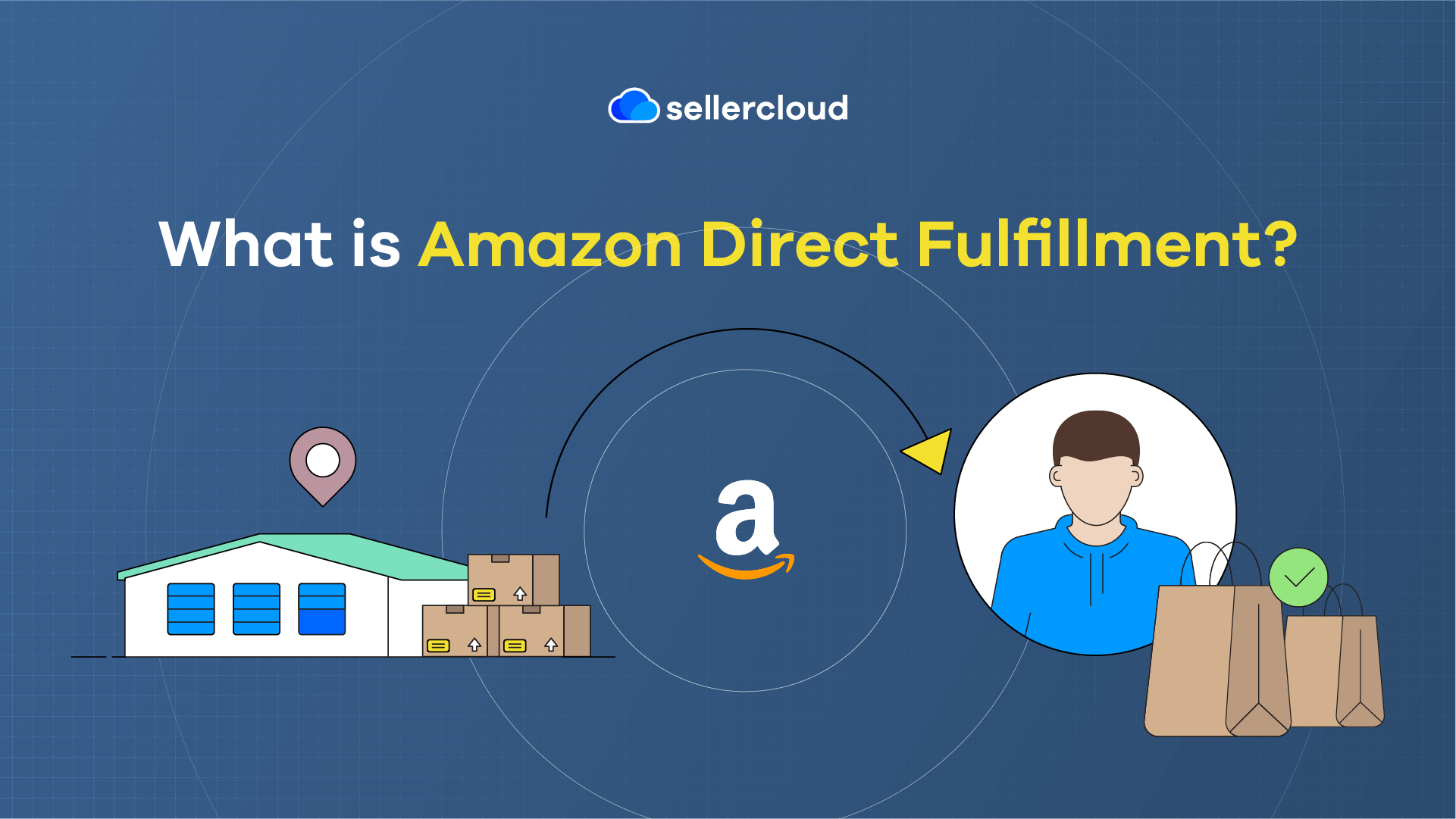
Direct Fulfillment (formerly ‘Dropship Central’) is a lesser-known cousin of Seller Central and Vendor Central that is worth exploring. Amazon’s Direct Fulfillment is a dropshipping option only available to Vendor Central users and can be selected during your enrollment to Vendor Central. Seller Central users must find their own dropshipping solution if they need one.
In Direct Fulfillment, Amazon sends customer orders to the vendor for fulfillment. Vendor Central sellers must also have a US-based warehouse and the capacity to ship to customers. Because of this, Direct Fulfillment isn’t appropriate for every business. It is best suited for large companies, as they typically have the best resources to fulfill orders.
Some of the top benefits of Direct Fulfillment include:
- Amazon takes care of shipping fees. Sellers only need to pay for packing materials and the cost of the labor to fulfill orders.
- Amazon handles customer service—you only have to worry about shipping the product to the customer.
- Cuts out FBA, which can simplify shipping. Instead, shipments go straight to customers, and there are fewer steps where things can go wrong.
However, Direct Fulfillment is not perfect; some downsides must be considered.
- Direct Fulfillment can be time- and labor-consuming. If you don’t have the resources, it can make the workload much harder to deal with.
- Amazon prioritizes FBA listings, so by utilizing Direct Fulfillment, your listings might not rank as well as competitors offering the same product through FBA.
- Amazon’s delivery methods are usually the fastest, and you likely won’t be able to match them with your dropshipping methods.
It can be strategically beneficial for sellers to utilize Direct Fulfillment alongside Vendor Central and Seller Central to optimize customer reach.
Descartes Sellercloud Supports Vendor Central, Seller Central, and Direct Fulfillment Sellers
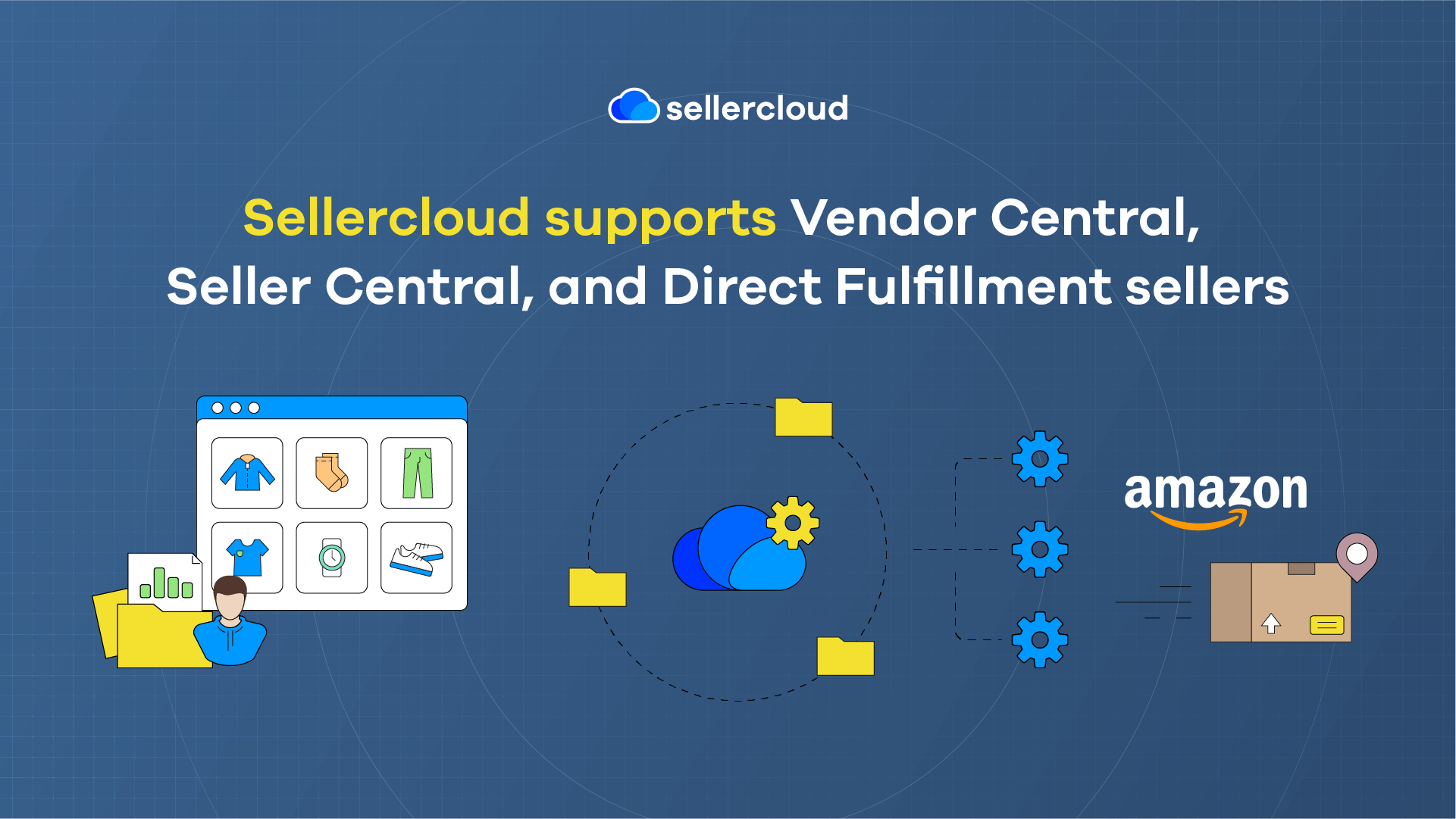
Regardless of the seller you are, Descartes Sellercloud can support and accommodate your ecommerce needs.
Whether you’re a small seller or a larger seller, Descartes Sellercloud supports Vendor Central, Seller Central, and Direct Fulfillment.
With Descartes Sellercloud, you can:
- Manage your inventory.
- Manage your warehouse.
- Manage your product listings across multiple channels.
- Manage your orders.
- Manage your shipping.
- Manage your purchasing.
- Manage your reporting.
And much more.
With such a broad selection of features, it’s no wonder we can accommodate businesses of all sizes, however they operate. Furthermore, Descartes Sellercloud’s strong focus on customization enables sellers to get all the services they need. With so much to offer, you’ll grow so much that you go from Seller Central to Vendor Central at lightning speed.
Interested in how Descartes Sellercloud can help your business? Request a demo today.
Key Points
You now know all there is to know about Vendor Central and Seller Central. Remember these key points.
- Seller Central is Amazon’s platform for third-party sellers, and Vendor Central is where Amazon buys from first-party sellers.
- Sellers can only join Vendor Central if Amazon invites them, while Seller Central is open to all businesses.
- Vendor Central can simplify a lot of the workload of selling products. However, it is not without risks—you must adhere to Amazon’s logistic requirements, or you can lose them as a buyer.
- Descartes Sellercloud works with Vendor Central, Seller Central, and Direct Fulfillment, so you can sell your products whichever works best for you.
FAQs
Is Amazon FBA the Same as Seller Central?
No, FBA stands for ‘Fulfillment By Amazon.’ It is Amazon’s fulfillment service, which sellers can use to fulfill orders from FBA fulfillment centers. Meanwhile, Seller Central is Amazon’s platform for third-party sellers to manage their Amazon store, product listings, and other related tasks.
Is Vendor Central Invite-only?
Yes, Vendor Central is invite-only, meaning they will scope out your business before inviting you to join the program.
How Does Amazon Pay Vendors?
Amazon offers three payment options. The best one for your business depends on how soon you need to be paid and how much of a percentage Amazon will take from you.
- 90 days after the transaction.
- 60 days after the transaction, Amazon retains 1%.
- 30 days after the transaction, Amazon retains 2%.

